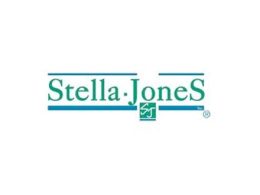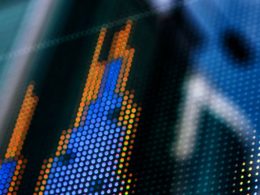by Niels Clemens Jensen, CIO, Absolute Return Partners
The ultimate level of interest rates is likely to be higher than previously anticipated.”
– Jerome Powell, March 2023
The dilemma
A tricky situation is unfolding, making it rather difficult for the Federal Reserve Bank to honour earlier promises to gradually ease off in its ongoing fight against inflation. Here is the dilemma confronting the Fed: Consumer confidence is a trustworthy indicator of economic conditions. When the expectations index falls much faster than the current situations index, a recession is usually around the corner (Exhibit 1).

Sources: Bloomberg, The Daily Shot
As you can see, we are now in recessionary territory, hence why Jerome Powell has been quite eager to ease off, but this is where his problems begin. The US labour market is telling a very different story. Despite consumer expectations having shrunk dramatically, US companies continue to recruit as if nothing has changed. As you can see in Exhibit 2, new jobs continue to be created at twice the pace of workers being dismissed.

Sources: FRED, The Daily Shot
You have to go all the way back to 1969 to find the US unemployment rate at a lower level than it was in January. Admittedly, it rose modestly in February (from 3.4% to 3.6%), but the number of unemployed Americans is still very far from recessionary levels. As you can see in Exhibit 3 below, a recession always unfolds, when the unemployment rate rises by 1% or more over a 12-month period. The rise in February was well below that.

Source: Bloomberg
The problem with this argument is that the unemployment rate is not a leading but a lagging indicator. Just because the unemployment rate has not yet risen 1%, it can still happen if we assume the US economy is softening. Furthermore, the unemployment rate doesn’t necessarily need to rise by 1% over a 12-month period for a recession to unfold. Recessions can happen for other reasons.
More insight, more advice, more in-depth.
Professional investors can now subscribe to a range of our research and strategic thinking. Sign up now for access to in-depth papers and webinars!Learn more about ARP+

Which way is the Fed leaning?
If the labour market tells a very different story than consumer confidence statistics do, the Fed is entitled to be confused. Therefore, investors need to take a view, as to which side the Fed is leaning. At this point in time, Jerome Powell’s recent testimony in Congress (which you can read about here) is probably your best guideline, and Powell was quite explicit in his verdict: “The ultimate level of interest rates is likely to be higher than previously anticipated”.
Within minutes of Powell testifying, the market-implied terminal rate had risen to 5.7% (Exhibit 4), a number that should be compared to the current Fed Funds rate, which is 4.75-5.00%. It was raised 25 bps at the last FOMC meeting, which took place a few weeks after Powell’s testimony in Congress, and after the regional banking crisis broke out. In other words, as things stand, investors don’t expect the Fed to radically change course as a result of the ongoing banking crisis.

Source: The Daily Shot
What to expect
In the first few days, following Powell’s testimony in Congress, analysts were busy adjusting their expectations. Take for example Blackrock. They are now of the opinion that the policy rate will probably peak at 6% (see here). As Rick Rieder, CIO of Global Fixed Income at Blackrock, said: “We think there’s a reasonable chance that the Fed will have to bring the Fed Funds rate to 6%, and then keep it there for an extended period to slow the economy and get inflation down to near 2%.”
Although I don’t disagree with Rick Rieder that, as a consequence of the robust US labour market, the terminal rate will most likely be higher than current consensus expectations, I am not at all convinced that 6% will suffice. A very important lesson I learnt during the last major spike in inflation around 1980 was that economic agents (whether borrowers or lenders) must be disincentivised big time for lending to be curtailed. Back then, excessive lending was a big part of the problem, and that isn’t much different today. If net interest margins are good, and the economic outlook reasonably robust, neither side will be disincentivised by 6%. Based on that observation, 7-8%, possibly even more, may be required to curtail lending. If that were to happen, equities could fall a fair bit further.
There are two counterarguments to that observation. First and foremost, the meltdown of Silicon Valley Bank, and the ensuing regional banking crisis, could have widespread implications, but it is too early to tell. SVB in itself isn’t big enough to cause any systemic problems, but small and mid-sized banks in general account for too big a share of overall lending in the US for the crisis to be unproblematic. Therefore, should contagion become meaningful, you should expect the Fed to change course.
Secondly, I remain convinced that central bankers may not mind inflation running ahead of targets for a while, reason being that inflation destroys debt. You’ll probably never get a central banker to admit to such a strategy, but the argument makes sense in a world that is drowning in debt. And, precisely for that reason, I would love to be a fly on the wall when the next FOMC meeting takes place.
Niels C. Jensen
3 April 2023















